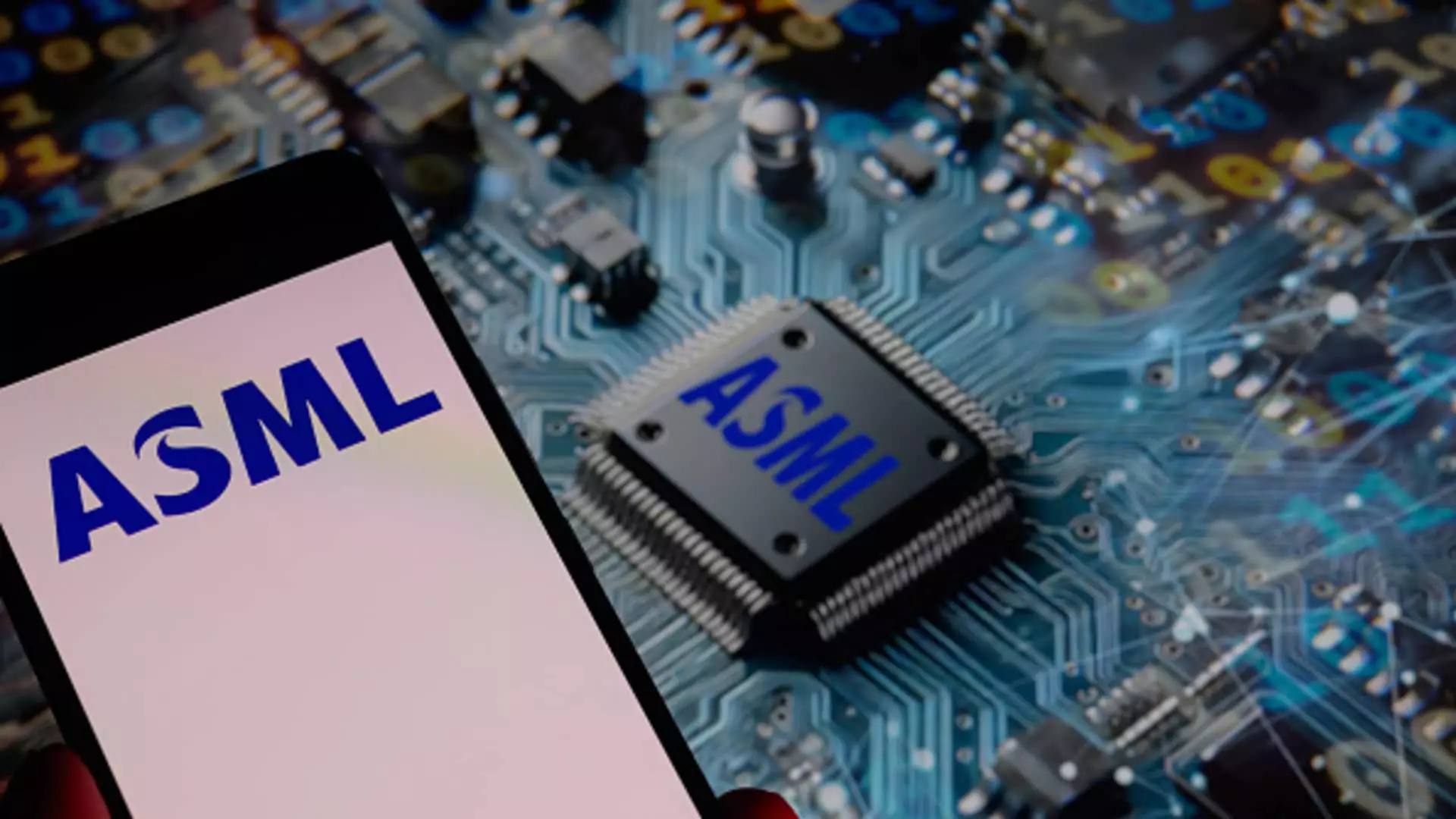In just under a year, ASML, a titan in the semiconductor industry, has seen its market capitalization plummet by over $130 billion, a staggering decline that reflects the volatile landscape of global trade and technology. Once soaring to unprecedented heights—boasting a market cap around $429.5 billion in July 2022 when shares hit the psychological barrier of 1,000 euros—ASML now grapples with a harsh reality as its value dwindles to approximately $297 billion. What was once heralded as a cornerstone of innovation in the tech world is now under siege from external pressures that show no sign of abating.
U.S. Export Restrictions: The Sword of Damocles
The catalysts for this decline are multifaceted, but the tightening of U.S. export restrictions to China stands out as the principal factor. The trade policies enacted by the U.S., especially those directed at China, create an unstable environment for companies like ASML that rely heavily on foreign markets. These restrictions, coupled with the looming threat of tariffs instituted during Donald Trump’s administration, have cast a long shadow over an industry that was poised for growth and expansion. Stephane Houri, an astute observer of equity trends, notes that the collective angst surrounding these export limitations has sent shockwaves across the sector, impacting all manufacturers caught in the crossfire of geopolitical tension.
A Pivotal Player in Advanced Technology
ASML’s significance in the semiconductor supply chain cannot be overstated. It manufactures cutting-edge extreme ultraviolet (EUV) lithography machines essential for producing next-generation chips. In essence, ASML is not just part of the semiconductor equation; it is, arguably, the equation itself. However, the paradox is stark—despite being the only company capable of producing these advanced machines, ASML has been notably restricted from serving one of its potential largest clients: China. ASML CEO Christophe Fouquet’s projections are sobering; he anticipates that by 2025, ASML’s business ratio in China will be significantly lower than it is in the current economic climate.
The Ripple Effect: A Broader Market Impact
The turmoil surrounding ASML is not insular; it sends ripples through the entire semiconductor market. As investors contend with the uncertainty hanging like a dark cloud over the sector, many chip stocks have also felt this tremor. The prospect of a trade deal between the U.S. and Europe could signal a glimmer of hope, yet the path to such diplomacy appears fraught with complications. A few analysts express cautious optimism that any agreements could relieve some tension and stimulate growth, reiterating the industry’s reliance on political stability as much as on technological advancement.
Future Prospects: Hope Beyond the Horizon?
Despite the daunting challenges before it, some analysts still project a bullish stance on ASML’s future. Current forecasts suggest a target price of over 779 euros per share, representing a potential upside of 17% from recent closing prices. The sentiment is that key players like Samsung and Intel are investing in next-generation chip-making technologies, which could lay the groundwork for a resurgence. However, this optimism feels tenuous in light of the systemic issues at play—how many more false dawns can investors stomach before the stock market is illuminated by genuine recovery rather than mere speculation?
The Inevitable Question: Can ASML Navigate the Storm?
As ASML stands at this crossroads, one can’t help but question its resilience amidst such turmoil. Will it be able to navigate through the treacherous waters of trade restrictions and international tariffs, or will it become another casualty of a technology war? This scenario underscores a broader concern: in our increasingly interconnected world, the fate of technological advancement hangs precariously on political decisions, leaving companies like ASML to bear the brunt of a complex global chess game. We must not only watch the players’ movements but also demand accountability and foresight in shaping policies that will determine the future of innovation itself. The onus is not only on ASML but on all stakeholders to confront these realities head-on.


Leave a Reply